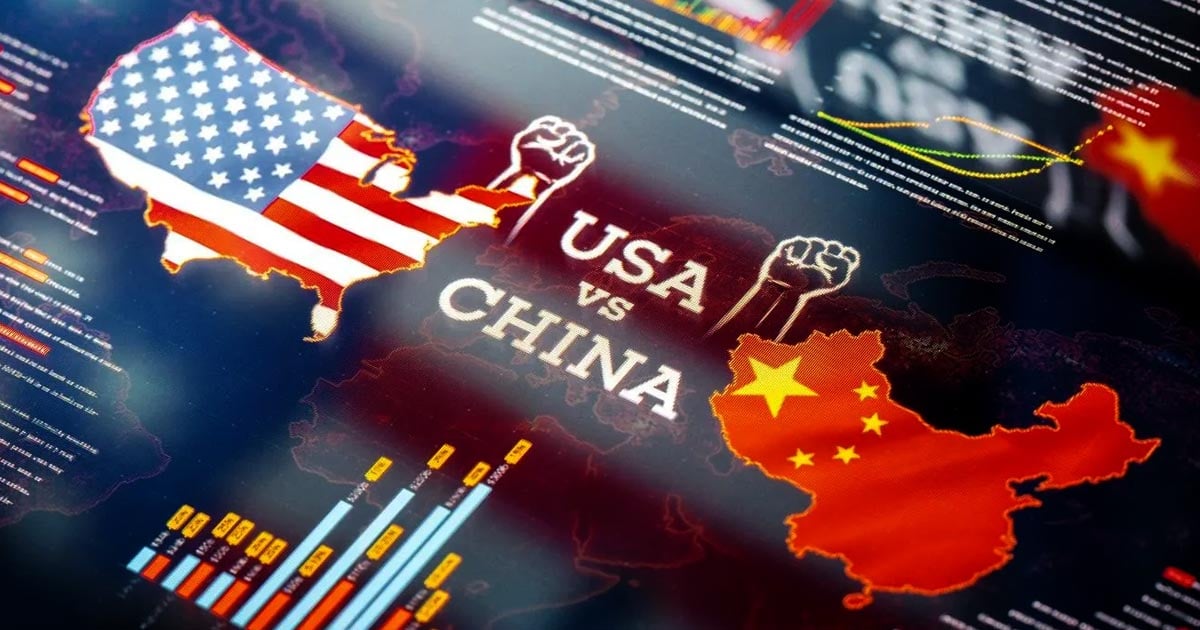Image Source: Getty Images
The United States (US) launched its AI Action Plan on 23 July 2025. Just three days later, on 26 July 2025, China released its Action Plan for Global Artificial Intelligence Governance at the 2025 World AI Conference hosted in Shanghai. The key difference between the two approaches is that while the US is increasingly looking inwards to build its domestic capabilities, China is looking outwards in a bid to leverage multilateral partnerships — developed over years of building institutions such as the Belt and Road Initiative (BRI) and the Digital Silk Road (DSR).
Crucially, while the US narrative on AI policy has been one of unfettered innovation, China’s approach places the focus squarely on governance. Beijing has proposed the establishment of a global AI cooperation organisation to strengthen collaboration on development and regulation. Coupled with its growing influence across global standards bodies and attempts to manipulate standard-setting processes, China aims to move the needle on how AI should be governed.
Crucially, while the US narrative on AI policy has been one of unfettered innovation, China’s approach places the focus squarely on governance.
The US’ AI Action Plan for ‘Winning the Race’ rests on the three pillars of innovation, infrastructure, and security. The advancement of these three pillars is structured around deregulation across the board, whether it be in AI regulation per se or environmental regulation to build data centres. This is complemented by proposals to strengthen the export control regime, plug existing loopholes, and insulate US innovation from its adversaries.
While the US is championing deregulation as a strategic approach to enhance its competitiveness, its focus on the export of “the full AI technology stack – hardware, models, software, applications, and standards,” as well as on open source and open weight AI, is a nod to DeepSeek’s phenomenal success and adoption around the world. DeepSeek is also integrated as part of a suite of products and services offered by US-based hyperscalers, which means it is now built into the AI infrastructure offered by cloud companies.
China’s recent AI strategy brings the focus back on governance and international cooperation, contrasting sharply with the US strategy of using technology as a strategic leverage. Beijing’s propositions of international cooperation rest on the firm foundation of having spent decades building strategic infrastructure projects like the BRI and the DSR. As two economic and AI powers spar, India must carve out its own space.
Governance, Adoption, and Market Penetration
Developing mechanisms for governing AI systems is a value-laden exercise — it determines how an AI system is developed and its impacts on deployment and implementation. Moreover, governance frameworks are key for higher adoption and for fostering trust in the system. The development of governance mechanisms encompasses defining technical specifications and standards, as well as oversight of processes related to the modes of development and deployment.
The structures of dependency that China has created through its international projects, such as the BRI and the DSR, lay the groundwork for the diffusion of social, technical, and institutional norms that enable frictionless access for Chinese products and services across world markets. Much as the US built its AI industry on the legacy effects of Big Tech social media products and services during Web 2.0, China has constructed its legacy by creating systems of strategic dependency.
A key aspect of the Chinese AI strategy is the proposal to extend technological assistance to nations in the Global South. China’s recent Politburo study session on AI demonstrated a strong intent to support the Global South and highlighted how Beijing aims to win the AI race through adoption and market penetration as opposed to innovation.
A key aspect of the Chinese AI strategy is the proposal to extend technological assistance to nations in the Global South.
Over the years, China has had a growing influence within international standards-setting bodies and digital governance institutions, with its key stakeholders occupying strategic leadership positions. Beijing’s increased influence in AI governance is expected to reduce trade frictions and open markets for Chinese firms.
On the other hand, propositions under the US AI Action Plan appear to be undercut by the White House’s actions, such as President Donald Trump’s “little deals”, which involve a 15 percent cut to the federal government from NVIDIA and AMD’s resumption of sales of H20 and MI308 chips to China. The H20 chip was specifically designed for the Chinese market, in compliance with export control restrictions. NVIDIA was asked by the Trump administration to halt its sales at the beginning of the year until further notice.
Notably, the H20 is an important chip within the mix that DeepSeek claims to have been trained on, although its compute corpus is estimated to be much higher than declared. The question remains whether this is an ad hoc exemption or a precedent for standalone deals that can circumvent the proposed export control mechanisms.
India’s Value-Based Leadership
India has articulated its support for a pro-innovation governance approach and a proposed framework that leverages existing laws, all while taking steps to enhance its domestic capacity in models, data, and compute. However, the two AI economies of the US and China have established foreign policy agendas that build on their existing strengths. In this context, India must identify and define areas where it can strengthen domestic capabilities while simultaneously paving the way for value-based AI leadership in the Global South.
India must identify and define areas where it can strengthen domestic capabilities while simultaneously paving the way for value-based AI leadership in the Global South.
India’s export of its Digital Public Infrastructure framework and components is grounded in frugal innovation, which can be easily adapted to the realities of implementing countries. It respects sovereignty without creating structures of dependency, highlighting values underpinning its innovation and technological leadership. India should build on this momentum to develop technical tools suited to developing country realities, such as Kompact AI by IIT Madras and Ziroh Labs, which enables LLMs to run on local computers. This must be complemented by an effort to foster bilateral and multilateral consensus on the key aspects of operationalising global AI governance, including definitions of technical tools and specifications, standards, and norms.
The neglect of governance as a key aspect of the global AI agenda will allow China to stake its technological leadership over the Global South, which encompasses vast, untapped markets. This increased market penetration will place New Delhi at a disadvantage, particularly at a time when Indian technical innovations have demonstrated the potential to accelerate development outcomes for the Global South.
Anulekha Nandi is a Fellow with the Centre for Security, Strategy and Technology at the Observer Research Foundation.













